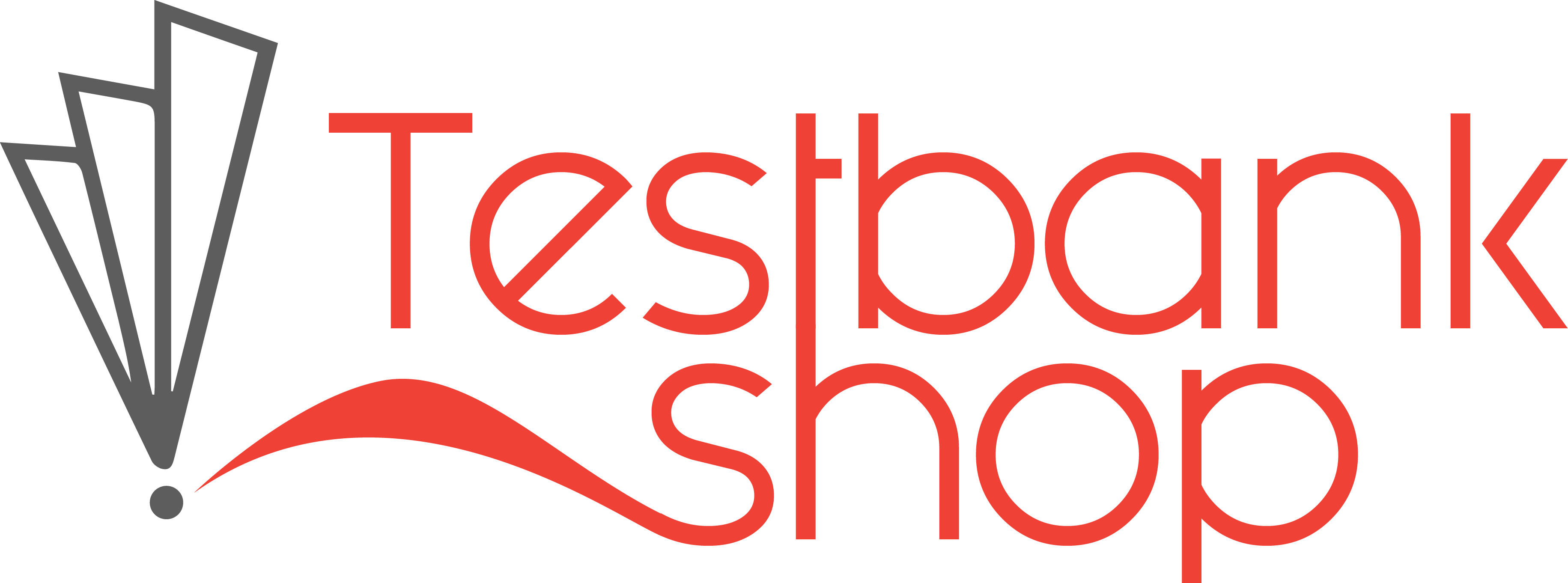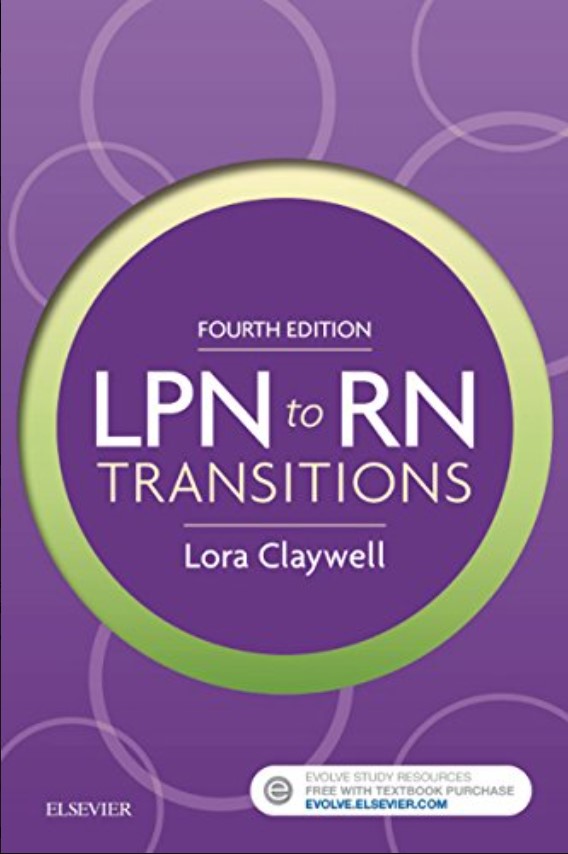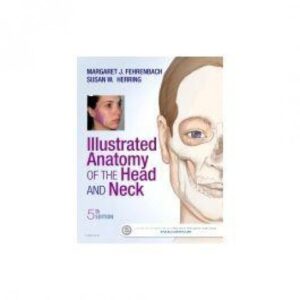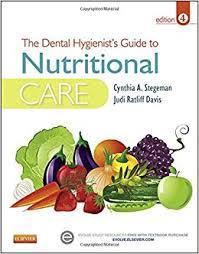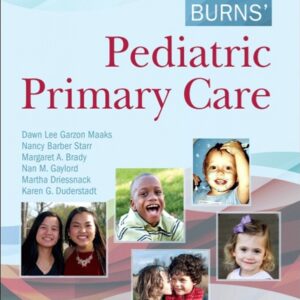Test Bank for LPN to RN Transitions 4th Edition By Claywell
ISBN: 9780323473897 ISBN: 9780323473866 ISBN: 9780323401517
Chapter 01: Honoring Your Past, Planning Your Future
MULTIPLE CHOICE
1. A nursing advisor is meeting with a student who is interested in earning her RN degree. She
knows that licensed practical nurse/license vocational nurse (LPN/LVNs) who enter nursing school to
become RNs come into the learning environment with prior knowledge and understanding. Which
statement by the nursing advisor best describes her understanding of the effect experience may have on
learning?
a. “Experience may be a source of insight and motivation, or a barrier.”
b. “Experience is usually a stumbling block for LPN/LVNs.”
c. “Experience never makes learning more difficult.”
d. “Once something is learned, it can never be truly modified.”
ANS: A
Experience accentuates differences among learners and serves as a source of insight and motivation, but
it can also be a barrier. Experience can serve as a foundation for defining the self.
DIF: Cognitive Level: Application
OBJ: Identify how experiences influence learning in adults. TOP: Adult Learning
2. There is a test on the cardiovascular system on Friday morning, and it is now Wednesday night.
The student has already taken a vacation day from work Thursday night so that she can stay home and
study. She is considering skipping her exercise class on Thursday morning to go to the library to prepare
for the test. Which response best identifies the student’s outcome priority?
a. Exercise class
b. Going to the library
c. Avoiding work by taking a vacation
d. Doing well on the test on Friday
ANS: D
The outcome priority is the essential issue or need to be addressed at any given time within a set of
conditions or circumstances.
DIF: Cognitive Level: Application
OBJ: Identify motivations and personal outcome priorities for returning to school. TOP: Motivation to
Learn
3. A nurse who has been an LPN/LVN for 10 years is meeting with an advisor to discuss the
possibility of taking classes to become an RN. The advisor interprets which statement by the nurse as
the driving force for returning to school?
a. “I’ll need to schedule time to attend classes.”
b. “I’ll have to budget for paying tuition.”
c. “I’ll have to rearranging my schedule.”
d. “There is a possibility of advancement into administration.”
ANS: D
Driving forces are those that push toward making the change, as opposed to restraining forces, which
are those that usually present a challenge that needs to be overcome for the change to take place or
present a negative effect the change may initiate.
DIF: Cognitive Level: Application
OBJ: Identify motivations and personal outcome priorities for returning to school. TOP: Motivations for
Change
4. An RN is caring for a diabetic patient. The patient appears interested in changing her lifestyle
and has been asking questions about eating better. The nurse can interpret this behavior as which stage
of Lewin’s Change Theory?
a. Moving
b. Unfreezing
c. Action
d. Refreezing
ANS: B
The patient is in the first phase of Lewin’s Change Theory, known as unfreezing. This phase involves
determining that a change needs to occur and deciding to take action. Moving is the second phase and
involves actively planning changes and taking action on them. Refreezing is the last stage, and it occurs
when the change has become a part of the person’s life.
DIF: Cognitive Level: Analysis
OBJ: Understand Change Theory and how it applies to becoming an RN. TOP: Change Theory
5. An LPN is talking with her clinical instructor about her decision to return to school to become an
RN. The clinical instructor iNnterprets the LPNs outcome priority based on which statement?
a. “My family wanted me to go back to school.”
b. “I want to better my financial situation.”
c. “I really enjoy school.”
d. “I would like to advance to a teaching role someday.”
ANS: B
The outcome priority is the essential need that must be addressed, determined by internal and external
factors, such as needing to better a financial situation. The other statements indicate reasons for
returning to school, but they are not essential needs or issues to be addressed.
DIF: Cognitive Level: Analysis
OBJ: Identify how experiences influence learning in adults. TOP: Adult Learning
6. A nurse notices a posting for a management position for which she is qualified. If the nurse is in
the moving phase of Lewin’s Change Theory, which statement reflects the action she is most likely to
take?
a. Does nothing to obtain the position
b. Applies for the position
c. Identifies that change is needed
d. Settles into the routine of her job
ANS: B
Unfreezing begins when reasons for change are identified. The moving phase involves active planning
and action. Moving also means you are dealing with both positive and negative forces as they ebb and
flow, and you are making modifications to your plan as needed.
Refreezing occurs after the change has become routine.
DIF: Cognitive Level: Application
OBJ: Understand Change Theory and how it applies to becoming an RN. TOP: Change Theory
7. An Orthopedic Nurse is contemplating changes in her professional life and identifying goals.
Which action should the nurse take if she is interested in pursuing a long-term goal?
a. Studies for a telemetry exam scheduled for next week
b. Enrolls in a Nurse Practitioner program
c. Attends a seminar to become a charge nurse
d. Continues to work on the orthopedic floor full-time
ANS: B
A short-term goal is one that can be attained in a period of 6 months or less. Short-term goals include
becoming a charge nurse and passing the telemetry exam. A long-term goal is attained in greater than 6
months and includes studying to become a Nurse Practitioner. Continuing to work on the orthopedic
floor does not represent either a short-term or a long-term goal.
DIF: Cognitive Level: Application
OBJ: Identify both short- and long-term personal and professional goals. TOP: Setting Goals
8. The RN is talking with the unit manager about ways to improve patient care. The manager
introduces the concept of a cohNort. Which statement by the RN indicates that the teaching has been
effective?
a. “A cohort is a web of connections”.
b. “A cohort is a group of people who share common experiences with each other”.
c. “A cohort is a group linked together for common purposes”.
d. “A cohort consists of groups of individuals that make up a whole”.
ANS: B
A cohort is a group of people who share common experiences with each other. A scheme is a web of
connections, a team is a group linked together for common purposes, and a unit consists of groups or
individuals that make up a whole
